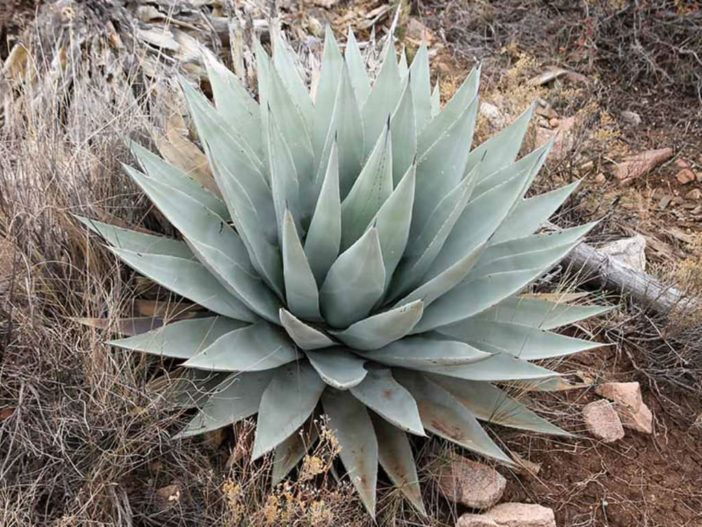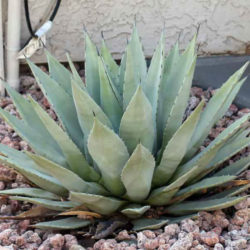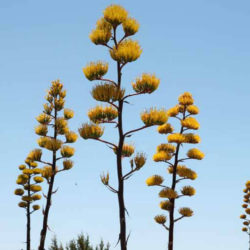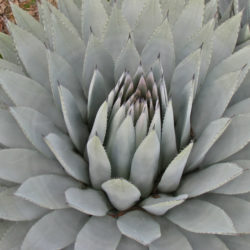Scientific Name
Agave parryi var. couesii (Engelm. ex Trel.) Kearney & Peebles
Common Name(s)
Coues Agave, Coues Century Plant
Synonym(s)
Agave couesii
Scientific Classification
Family: Asparagaceae
Subfamily: Agavoideae
Genus: Agave
Description
Agave parryi var. couesii is an attractive succulent that forms compact rosettes of lance-shaped leaves with spiny margins and a dark brown to gray terminal spine. The rosettes grow up to 22 inches (55 cm) tall and 26 inches (65 cm) in diameter, producing offsets at the base. They are more open than Agave parryi var. parryi, and the leaves are smaller, narrower, and greener than the type species. This coloration matures into a pale bluish-green.
There are also differences in the flowers, which are smaller in this variety, with the tepal tips more densely covered in tiny hairs. Usually, in late spring to early summer, a spectacular flowering spike emerges from the center of mature rosettes bearing 20 to 30 branches with large clusters of pale yellow flowers. The flowers are tubular and up to 2.4 inches (6 cm) long.
Origin
Agave parryi var. couesii is native to the United States. It occurs in central Arizona in gravelly places in grasslands, chaparral, pinyon-juniper, and oak woodlands at elevations between 3,610 and 6,890 feet (1,100 and 2,100 m).

Hardiness
USDA hardiness zone 8a to 11b: from 10 °F (−12.2 °C) to 50 °F (+10 °C).
How to Grow and Care
Agave is not a difficult plant to grow. They're slow-growing and dramatic and will even thrive on a bit of neglect. If you're the type of person who likes to fuss with houseplants and water a lot, Agave is probably not the plant for you. If, however, you're the type of person who likes to set it and forget it, and you have a sunny window, Agave might be the way to go. Be aware that some large varieties will eventually outgrow your room (unless you have a large greenhouse), and Agave can be aggressive. They have irritating sap and sometimes very sharp thorns that can cause injuries to small children and even pets.
In general, Agaves do not need to be repotted every year. Most species commonly found in cultivation grow slowly and take a long to outgrow their pot. It's also best to handle your Agave as little as possible since they do not like to be disturbed.
See more at How to Grow and Care for Agave.
Links
- Back to genus Agave
- Succupedia: Browse succulents by Scientific Name, Common Name, Genus, Family, USDA Hardiness Zone, Origin, or cacti by Genus
Photo Gallery
Click on a photo to see a larger version.


